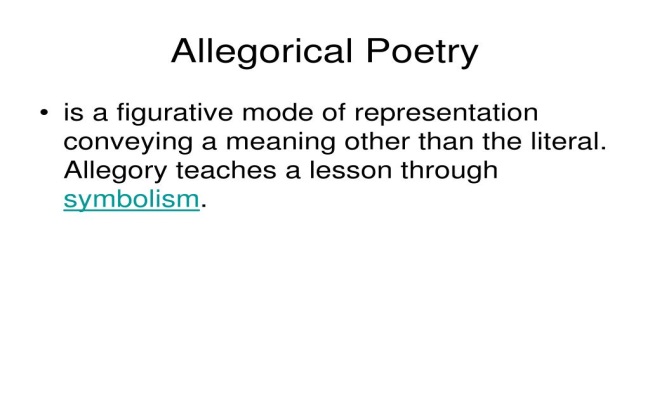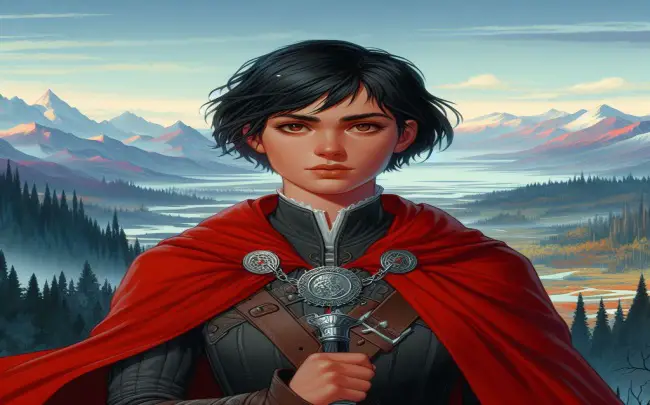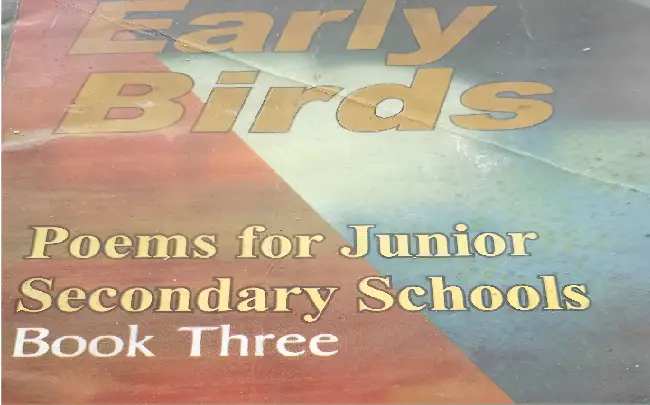Have you ever heard of allegorical poems or written one before? If you have not, you will learn all about this special type of poems today and yeah, craft your first allegorical poem after going through this rather lengthy article.
Don’t worry, it wil worth every seconds of your time.
Allegorical poems are like puzzles full of symbols and hidden meanings, and have been around for a really long time, changing and getting more interesting as the years went by.
In this article, we will take a journey through time, exploring how these special poems started way back and how they have changed in different cultures and times. It is like walking through different worlds of creativity, from really fancy old times to more complicated modern days, and seeing how these poems affected not just stories but also how people thought about the world and society.
By the end of our adventure, you will be a pro at understanding these cool poems, finding the hidden meanings, and seeing the world in a whole new way!
What Are Allegorical Poems?

To be concise, An allegory poem engages readers with superficial characters and actions and invites them to decipher profound meanings or moral lessons demurely concealed beneath. Firing the imagination, allegorical poems served to disseminate societal, ethical, and philosophical wisdom in a format that was palatable and engaging.
Origins And Evolution Of Allegorical Poetry
Gazing upon the illustrious tapestry of human expression, it is clear that art form has forever played a substantial role in society. Rooted deeply in the annals of human existence, allegorical poems are the sublime poetry types that have resided as the quiet spectator of sociopolitical climates, intricately bolstering societal evolutions through the ages. The allegory emerges as a compelling subject that boasts of a storied genesis and noteworthy evolutionary trajectory.
Let’s take a glance on how this trajectory came into existence.
Casting the lens back to the earliest vestiges of human history, the roots of allegory can be traced back to ancient Greece. Plato’s significant works, such as ‘The Allegory of the Cave,’ brace themselves as early indicators of allegorical usage in formal writing.
Afterwards, the Middle Ages brought forth a shift in the winds of allegorical poetry, resulting from the potent cultural marriage of Christian ideology and literary traditions. Dante Alighieri’s ‘Divine Comedy‘ is held up as a masterpiece of the epoch, effortlessly weaving the layered fabric of allegory to espouse profound theological messages. Present here, is the palpable evolution of allegory from its Greek infancy, adopting the broader shoulders of sophisticated moral, religious, and political ideology.
In the spread of global literacy during the Enlightenment period, allegorical poetry developed an even more sophisticated veneer. The sublime work of John Bunyan’s ‘The Pilgrim’s Progress‘ unfolded profound spiritual messages through the intricate tapestry of allegory.
At this juncture of literary evolution, the allegory had transformed from a mere storytelling vehicle to a societal and philosophical catalyst.
With the anticipate progression in the contemporary era, the allegorical cloak shed the traditional vestiges, opening doors to deeper, more subversive interpretations. The sizzling pens of T.S. Eliot and Ezra Pound rescripted the trajectory of allegorical poetry, delving into the eroding culture of post-World War society, thereby bringing in forth the concept of modernist allegory.
In the panorama of contemporary literature, allegory continues to flame its eternal torch, illuminating the pathways of modern doctrines and existential explorations. Authors such as Paulo Coelho (‘The Alchemist’), navigate the shifting sands of spiritual and personal discovery through hints of allegory.
Suffice to say, across the multifaceted prism of time, allegorical poetry has proven to be a resilient and insurmountable pillar of interpretative literature. From historical to spiritual, philosophical to societal, they have donned multiple mantles, morphed through evolving societies and yet, ceaselessly continue to evoke profound introspection and aesthetic pleasure.
Elements Of Allegory In Poetry
An allegory, at its core, is a narrative replete with symbolic figures, events, and ideas, whereby surface-level storytelling is undergirded by deeper, more profound messages that the author wishes to instil in their readers.
Dual Nature
First and foremost, an essential marker of an allegory is its dual nature. On the one hand, there is the manifest storyline – the characters, the plot, the setting. Simultaneously, beneath the storyline runs a second, latent narrative where the true essence of the allegory resides. Metaphor and symbolism reign supreme here, moulding realities and seeking to communicate complicated concepts in a convoluted manner (moral truths in a digestible form).
Simplistically put, all elements of the storyline act as carriers or vessels of expressions whose meanings are shrouded in metaphor.
Universality
Next, an unmistakable element is its universality. Though an allegory may be steeped in the specifics of its era, its sheer power stems from its ability to transcend between eras. Allegorical poetry presented in an individual’s words gives voice to universal human experiences, aspirations, and anxieties. Thus, effectively bridging the gap between personal expression and collective resonance.
Moreover, the distinct narrative style of allegorical poetry affords latitude for diversity and intellectuality. Where one reader recognises an ode to virtue, another might discern a commentary on societal dynamics. Hence, the multi-layered nature of allegories enables readers to derive meanings based on both textual evidence and personal interpretation.
Didacticism
Allegory is intrinsically linked to didacticism – education. In essence, it occupies a unique space where art meets instruction. Owing to its inherent duality, these poetic creations serve as conduits for guidance – simultaneously entertaining and educating readers. Herein lies its vehicle for moral instruction, where lessons are imparted subtly, ensuring lessons learnt are both lasting and impactful.
Focus On Main The Character

Lastly, one must acknowledge the protagonist’s journey in an allegorical piece. Often, this journey symbolises a universal pilgrimage towards enlightenment or moral growth. Empathy is evoked for these characters not necessarily because of their specific circumstances but because of the universal trials and tribulations that they navigate.
In essence, allegory dances on the line of reality and abstraction. While designed to reflect an author’s unique interpretation of reality, it resonates with others through its symbolic language and multi-dimensional narrative. It is this oscillation that defines allegory as a distinctive poetic genre, breathing life into the inanimate and voice into the silent.
Understanding these defining elements of allegorical poems can facilitate a richer and deeper appreciation of these poems in their myriad forms.
How To Analyse Allegorical Poems
To analyse allegorical poems, one requires a technique to navigate through the labyrinth of symbols, metaphors, and narratives inherent in allegorical poetry. At its core, the process mandates an attentive examination of every line present in the text to gain a clear comprehension of the embedded narrative.
Understand The Structure
An initial stage is understanding the structural nuances of the poem. The rhythm, rhyming system, and the layout used often embody the narrative’s tone and atmosphere. For instance, one finds an iambic pentameter reflective of an emotional, contemplative theme, while a trochaic tetrameter normally suits a narrative with a more solemn tone.
Explore The Language Use
Further illumination can be gleaned from detailed exploration of the linguistic elements within the piece. The emphasis on particular words, the use of specific verbs, adjectives or nouns, and the pull of syntax in intricate phrasing all help to unearth the latent narrative couched beneath the literal text.
Pay Extra Attention To Imagery
Imagery provides another rich source for decoding the symbolic nature of allegorical poetry. Painted through metaphors, similes, and personification, the images constructed by the poet can unfold a new layer of understanding. They often reveal emotions, situations, or ideas that are nuanced, complex, and universally prevalent.
Protagonists Are Reflective
A crucial dynamo in the web of allegory is the protagonist. Any altercation in their journey, their interaction with other characters, and their eventual transformation often represents an inherent philosophical, societal, or moral theme. Probing into the protagonist’s evolution enhances our ability to grasp the didactic purpose the poet endeavours to infuse.
Check For References
The study of allusions, whether historical, literary, cultural, or mythological, embeds an allegorical poem in a comprehensive set of precedents. Clues that echo past writings, cultures, or events empowers a poem with the weight of collective human experience, often revealing key allegorical insights.
An oversimplified, literal interpretation risks leaving potent layers of meaning unexplored. Allegorical poetry instead invites its audience to engage in the delicate interplay of reality and abstraction. It often reflects the societal milieu and distills experiences into a narrative that unfolds to deliver greater understanding of human realities.
Decoding allegorical poetry, therefore, demands meticulous examination, a capacity for intellectual dexterity, and an openness to perceive the merger of the manifest and the latent. Ultimately, it uncovers the unfolded wisdom embedded not only in the lines written on paper but also in the unwritten spaces in between.
Conclusion
Ultimately, a deep-dive into the captivating universe of allegorical poetry reveals its lingering influence, not only on literature but on mankind’s socio-cultural progression. It is an exploration that sensitises us to the nuanced interplay of literal and figurative meanings within these poems, with the potential to radically reshape our perspectives about the world.
As we navigate through the labyrinth of symbolism and metaphor, we appreciate the prowess of poets who have mastered this genre, their works bearing upon the course of humanity. It remains evident that allegorical poetry, a profound reservoir of wisdom and commentary on our existence, retains its relevance and appeal across eras. Its legacy, etched in the annals of literary history, cements its enduring importance in our ongoing, collective human narrative.




